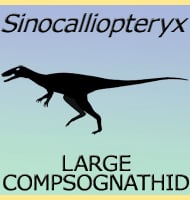Mirischia
In Depth Mirischia is a genus of compsognathid dinosaur that lived in what is now Brazil during the early Cretaceous. Mirischia means ‘wonderful ischia’, and this dinosaur acquired this name because the two ischia (bones of the pelvis) show an oval foramen (opening) in the left bone, and a notch in the same position on … Read more
